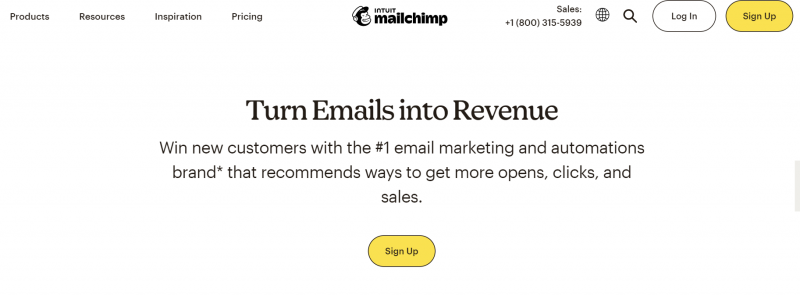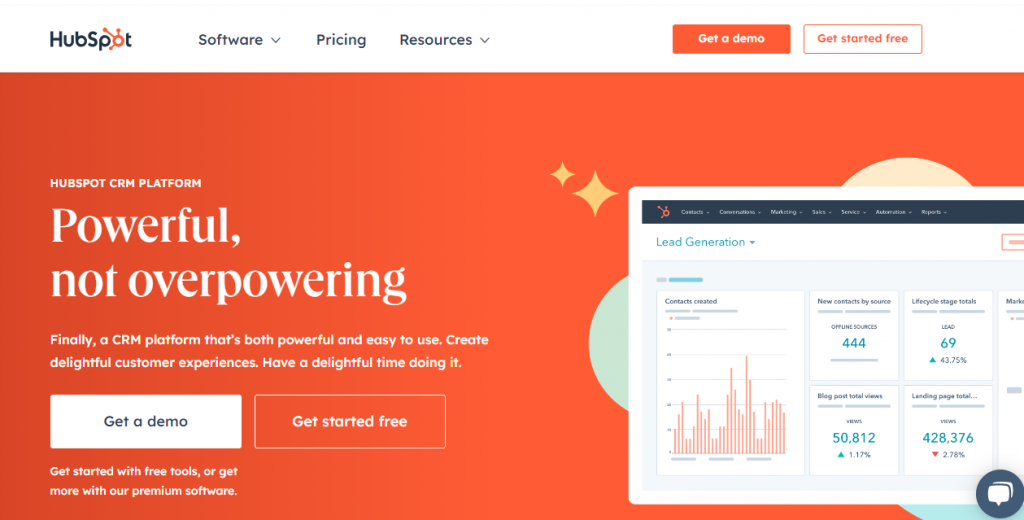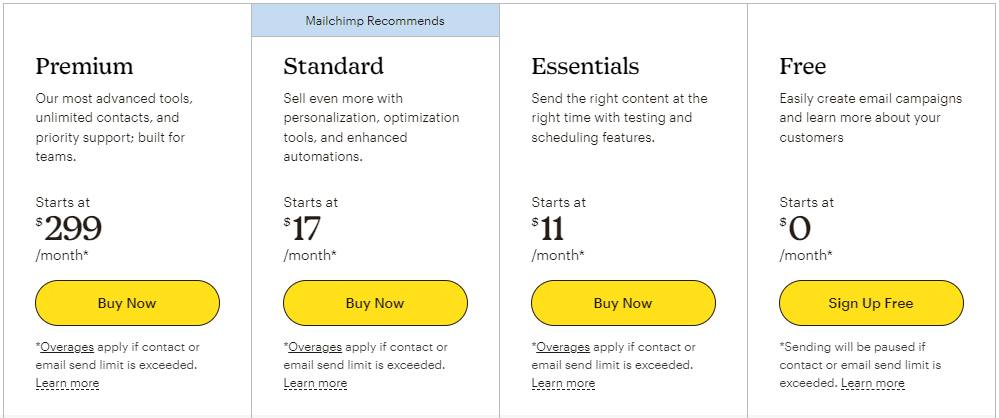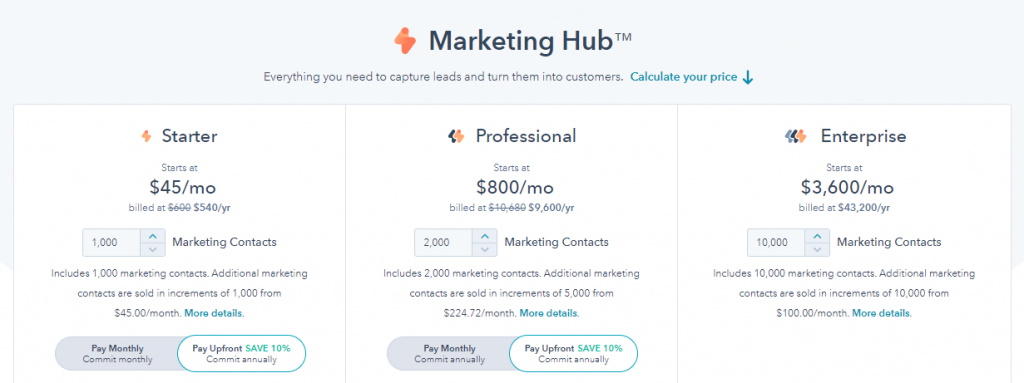The increasing demand for omnichannel experiences makes an agile marketing platform essential for business growth.
A consumer-insights survey shows that more than 80 percent of consumers shop across at least three different channels. Consumers interacting with brands through multiple platforms and multiple devices create countless touchpoints that can overwhelm marketers. These add to their endless list of tasks, including sending emails, launching ad-retargeting campaigns, managing social media accounts, and so on. This is where marketing platforms play a key role.
Aside from unburdening marketers of routine tasks, marketing platforms streamline workflows and improve efficiency. Their advanced tools for automation and email marketing services enable marketers to launch multiple campaigns in multiple channels all at once. However, choosing the right platform can be daunting with dozens of them to choose from.
Here, we focus on two of the most popular platforms today, Mailchimp and HubSpot. We try to make a point-by-point comparison of their features to help you decide which platform is best for your business.
Mailchimp vs HubSpot:
About Mailchimp

Source: mailchimp.com
Mailchimp was originally designed as an email marketing service targeted towards small businesses that did not have access to costly high-end email software tools. Over the last two decades, it has transformed into an all-in-one marketing platform that empowers small businesses. Their expanded service offerings now include advanced automations, a marketing CRM, smart content tools, shoppable landing pages, social posting digital ads, transactional emails, websites, and many more. The platform brings marketing channels, audience data, and insights in one easy-to-use interface.
Mailchimp is often preferred by entrepreneurs and small businesses for its affordable monthly subscription costs and flexible packages.
About HubSpot

Source: hubspot.com
HubSpot, on the other hand, brings together everything that a business needs to deliver exceptional customer experiences. It combines a full suite of sales and marketing tools with a powerful CRM. Its marketing hub offers email marketing automation and other flexible tools that enable you to run complete inbound marketing campaigns.
Aside from its marketing hub, HubSpot also has hubs for sales, service, operation, and CMS. Having all these make it a good platform for small businesses about to scale. This is also why many large enterprises prefer it over other platforms.
A Quick Glance at Numbers
Mailchimp HubSpot Number of users 14 million users 150,000 users Number of integrations Over 250 integrations Over 1,000 integrations Countries served 200 countries 120 countries Subscription price Starts at $11 per month Starts at $45 per month
Mailchimp vs HubSpot: A Comparison of Features
Email Marketing
There are over four billion email users worldwide. With such a vast pool of potential leads, email marketing becomes an essential part of every marketer’s tool kit. Moreover, it is one of the most cost-effective methods to engage new audience and nurture them into loyal customers.
Both Mailchimp and HubSpot have powerful email marketing tools – many of them quite similar. Both platforms have drag-and-drop email editors, email personalization, A/B testing, dynamic send times, and device optimization. They also offer transactional emails and ecommerce emails. Paid tiers also have access to data analytics and comparative reports.
When it comes to the number of templates, Mailchimp has more to offer – with 100 professional-looking templates to choose from. This helps you design and edit emails faster. However, HubSpot has a slight edge when it comes to customization. Emails can be personalized for each contact and designed to carry your unique branding.
Contact Management
As your business grows, your contacts database grows too. To nurture your relationship with every customer, you must keep track of all their interactions with your brand. Also, to give you a full insight into every customer journey, your marketing platform should include a contact management system.
MailChimp’s contact management system is integrated into its marketing CRM. It leverages segments to automatically create variable-based groups and uses tags to create groupings manually. The free version allows you to use up to five variables to create a segment, while the premium versions enable you to combine unlimited conditions for advanced segmentation.
The HubSpot CRM also offers list management and custom contact properties. But, unlike MailChimp, it allows unlimited number of properties for segmentation across all tiers, even for free versions. Moreover, it provides additional data on customer actions throughout the sales funnel.
Marketing Automation
Aside from email automation tools, your marketing platform must also have marketing automation to help you improve the quality of services and increase sales efficiency. With marketing automation, you unburden your team of repetitive tasks, so they can focus their efforts on more important ones. You also make customer engagements more efficient and enrich customer experiences.
For marketing automation, Mailchimp has content optimization tools and a customer journey builder. It offers over 40 pre-built customer journeys with expanded automation triggers for deeper customization. Along with other tools, it provides different ways to keep your customers engaged and satisfied.
HubSpot also has powerful tools for marketing automation to scale your efforts. Its automated workflows and cross-functional operations help personalize marketing across channels. It also has bulk data management feature that can save your precious time.
Social Media & Ads
In 2021, there were already 4.26 billion people using social media worldwide. By 2027, this number is expected to grow to as much as six billion. With even a fraction of this number as potential leads, social media is a medium that’s definitely worth establishing your presence in. However, managing your social media accounts and ads require different tools from traditional marketing methods.
Mailchimp has a social tool for posting and managing ads on Instagram and Facebook. This tool also allows you to manage your Google display ads. It also generates reports on how your ads spend connect to your revenue. However, targeting is limited as you cannot use a contact list to refine audience or specify pages.
HubSpot offers more when it comes to social media management. In fact, you can post comments on your social media posts straight from your HubSpot account. Its ad tool also lets you manage all your ad campaigns on different platforms and sync leads in a central location on HubSpot. You get to see which ads and on which platforms are converting leads into customers.
Supported Languages
For businesses with a global audience or with remote teams, support for multiple languages is important. This lets you reach customers from different countries worldwide and ensure clear communication among remote team members.
While Mailchimp is primarily in English, some of its pages and the Help Center can be translated into French, Spanish, Portuguese, German, or Italian – depending on browser settings. The Mailchimp mobile app is available in five languages: English, Spanish, French, German, and Portuguese. Using the auto-translate option, hosted forms and response emails can also be translated into over 50 languages.
On the other hand, almost all HubSpot software in all its hubs are available in several languages, including English, French, German, Japanese, Spanish, Dutch, and Italian. However, services and support have limited language availability. As of now, HubSpot support is available only in English, French, German, and Japanese.
Data and Analytics
To make smarter business decisions, you need to utilize the power of data and analytics. Identifying what works, what doesn’t, and what leads to the best outcomes will help you optimize your performance. Data analytics will also give you deep insights into customer behavior and your market so you can gain a competitive edge.
Mailchimp puts all your email marketing data in one place – saving you time needed to consolidate data across channels. An analytics dashboard displays all your campaign metrics so you can assess marketing performance over time.
HubSpot also has powerful data and analytics tools for marketing. You can custom object data into reports and build dashboards to share with teams. You can also track your ROI easily with revenue attribution reporting.
Price
It can be tricky to calculate email marketing costs for every campaign you run. But choosing a marketing platform that fits your budget is important for sustainability. Aside from making sure that you’ll be able to get the value you deserve for the money you’ll be shelling out, you must also make sure that you can sustain the monthly subscriptions.
Both Mailchimp and HubSpot platforms have tiered pricing from free versions for small businesses to premium ones for large enterprises. Mailchimp’s free version includes basic automations and templates for handling up to 2,000 contacts. All plans come with free website and commerce features which can also be upgraded to paid plans for access to more advanced tools for scheduling and selling.

Source: mailchimp.com
HubSpot’s free version is a bit more robust with up to 1,000 marketing contacts allowed and more advanced marketing automation tools. However, its rates are significantly higher than that of Mailchimp.

Source: hubspot.com
Free Version 2,500 monthly email sends for a maximum of 500 contacts Pre-built templates, 300+ integrations, basic reporting and analytics, forms & landing pages, creative assistant 2,000 monthly email sends for 1,000 contacts Limited features for forms, email marketing, ad management, live chat reporting dashboard Paid Tiers Essentials (from $11/month) 5,000 email sends for 50,000 contacts Role-based access, custom branding, A/B testing, email scheduling, automated customer journeys 6,000 email sends for 100,000 contacts Pre-built customer journeys, custom-coded templates, predictive segmentation, content optimizer, send time optimization, dynamic content 150,000 email sends for unlimited contacts Multivariate testing, comparative reporting, advanced segmentation, dedicated onboarding specialist Starter (from $45/month) 10,000 email sends limited to 1,000 contacts Free tools plus marketing automation, remove HubSpot branding, email and in-app chat support, payments 20,000 email sends for 2,000 contacts Omni-channel marketing automation, collaboration tools, campaign management, multi-language content, campaign optimization, custom reports, advanced support Unlimited email sends for 10,000 contacts Brand management, advanced reporting, SSO, permissions, adaptive testing, sandboxes, multitouch revenue attribution, behavioral event triggers, predictive lead scoring Special Rates Pay as You Go No monthly recurring charges, buy email credits as needed
Standard (from $17/month)
Premium (from $299/month)
Professional (from $800/month)
Enterprise (from $3,600/month)
15% discount for nonprofits and charities
Which Is Better? –Mailchimp or HubSpot?
The better platform is the one that meets your specific business needs. When choosing your marketing platform, consider your business goals, target audience, and budget. If you’re starting off, you can go freemium and leverage free email marketing tools.
As for these two, both are excellent platforms. The choice would depend on how much you can allocate for your marketing expenses. The level of marketing automation you need will also vary according to your business size and nature.
Choose Mailchimp
If your contact base is still fairly small and you have limited budget for marketing, go for Mailchimp. Its features are limited, but you still get value for the price you pay. Its price point definitely appeals to smaller business with simple automation requirements. So, choose Mailchimp if:
- You are highly focused on email marketing.
- You need a slipstream solution for simple marketing needs.
- You have limited budget for monthly fees.
Choose HubSpot
For large enterprises and business scaling their operations, HubSpot offers more advanced features. Its robust platform will allow you to manage multiple large-scale campaigns with ease. The price point is intimidating for small businesses but the potential ROI may be well worth the investment. Choose HubSpot if:
- You can afford to allocate a large marketing budget.
- You need a high level of customization and personalization.
- You want a central hub for sales, marketing, and services.
Get Started with HubSpot for Free
Explore HubSpot’s powerful features and see how it can elevate your marketing and sales efforts. Click here to get started.
Get a Marketing Platform that Boosts Efficiency
Keeping an eye on email marketing trends can be helpful, but it is not enough to optimize your marketing campaigns and improve performance. Regardless of your business type or size, you must invest in a marketing platform that can boost your efficiency and maximize your revenue.
Evaluate your needs and set your business goals before choosing an email marketing software or platform. The right one will ultimately pave the way for business growth.


